2021
Light: Advanced Manufacturing published three reviews and one article
Light: Advanced Manufacturing published two articles
LSA Monthly Editor's Pick Reviewer, Monthly Outstanding Readers and Top Downloaded Paper in November 2021
Light: Advanced Manufacturing three new articles published
LSA Monthly Editor's Pick Reviewer, Monthly Outstanding Readers and Top Downloaded Paper in October 2021
LSA's 10 Year Featured Issue on Optics and Photonics Research in Korea: Collaboration between Academia and Industry
The 10th Anniversary of LSA: Featured Issue on Advanced Liquid Crystal Photonics
2021 Rising Stars of Light Final Winners
LSA Monthly Editor's Pick Reviewer, Monthly Outstanding Readers and Top Downloaded Paper in September 2021
Light: Advanced Manufacturing three new articles published
LAM | Special issue on a 90-year journey towards light from the intramolecular universe
Special Issue on the 120th Anniversary of Shandong University
LSA Monthly Editor's Pick Reviewer, Monthly Outstanding Readers and Top Downloaded Paper in August 2021
Final Candidates: 2021 Rising Stars of Light
Special Issue: Rare earth luminescent materials
LSA Monthly Editor's Pick Reviewer, Monthly Outstanding Readers and Top Downloaded Paper in July 2021
LAM | Controllable microstructure and property in additive manufactured titanium alloy
LSA Monthly Editor's Pick Reviewer, Monthly Outstanding Readers and Top Downloaded Paper in June 2021
Light: Science & Applications: Volume and Impact Soared
Light: Advanced Manufacturing 2021 Volume 2 Issue 2 is officially published
LSA Monthly Editor's Pick Reviewer, Monthly Outstanding Readers and Top Downloaded Paper in May 2021
Light: Advanced Manufacturing | Multi-material multi-photon 3D laser micro- and nanoprinting
Light: Advanced Manufacturing | Digital holography in production: an overview
Light: Advanced Manufacturing two new articles published
LSA Outstanding Reviewers/Papers and Top Downloaded Papers in 2020
2021 Rising Stars of Light
LSA Monthly Editor's Pick Reviewer, Monthly Outstanding Readers and Top Downloaded Paper in March 2021
Special Issue on the 70th Anniversary of Department of Electronic Engineering, Tsinghua University
Light: Advanced Manufacturing | Extracellular scaffold design for ultra-soft microtissue engineering
LAM two new articles published
LAM | Special Issue on Celebrating Holography after 60 Years of Successful Application
LSA Monthly Editor's Pick reviewer, Monthly Outstanding Readers and Top Downloaded Paper in February 2021
Light: Advanced Manufacturing | Metasurfaces for manipulating terahertz waves
Light: Advanced Manufacturing | Photosensitive Material Enabling Direct Fabrication of Filigree 3D Silver Microstructures via Laser-Induced Photoreduction
Rose in Science, Lighting the world
LSA Monthly Editor's Pick reviewer, Monthly Outstanding Readers and Top Downloaded Paper in January 2021
Light: Advanced Manufacturing | Artificial compound eyes: inspiration for advanced camera systems
Light: Advanced Manufacturing | Recent Progress in Heterogeneous III-V-on-Silicon Photonic Integration
Light: Advanced Manufacturing | 3D-printed spectrometer on a 100 x 100 µm² footprint
LSA Monthly Editor's Pick reviewer, Monthly Outstanding Readers and Top Downloaded Paper in December 2020
Light: Advanced Manufacturing—first batch of articles officially online
--------------------------------------------------------------------------------------------------
LSA Monthly Editor's Pick Reviewer, Monthly Outstanding Readers and Top Downloaded Paper in November 2021
Release Date: 9 December 2021
LSA Monthly Editor's Pick Reviewer in November 2021
LSA Monthly Outstanding Readers in November 2021
LSA Monthly Top Downloaded Paper in November 2021
--------------------------------------------------------------------------------------------------
LSA Monthly Editor's Pick Reviewer, Monthly Outstanding Readers and Top Downloaded Paper in October 2021
Release Date: 22 November 2021
LSA Monthly Editor's Pick Reviewer in October 2021
LSA Monthly Outstanding Readers in October 2021
LSA Monthly Top Downloaded Paper in October 2021
--------------------------------------------------------------------------------------------------
LSA Monthly Editor's Pick Reviewer, Monthly Outstanding Readers and Top Downloaded Paper in September 2021
Release Date: 18 October 2021
LSA Monthly Editor's Pick Reviewer in September 2021
LSA Monthly Outstanding Readers in September 2021
LSA Monthly Top Downloaded Paper in September 2021
--------------------------------------------------------------------------------------------------
Special Issue on the 120th Anniversary of Shandong University
Release Date: 13 September 2021
Submission deadline: 28th February, 2022
Illustrations: This special issue is launched to celebrate the 120th Anniversary of Shandong University (15th October, 2021), as well as highlight the most distinguished research works and reviews from all aspects of opto-electronic crystals, optics and photonics, including basic science, applied and engineering research and applications.
Brief introduction of SDU: Shandong University (SDU), under the direct jurisdiction of the Ministry of Education, is a key comprehensive university with a long history, a variety of disciplines, strong academic strength, and distinctive characteristics, which has great influence both at home and abroad. Shandong University is one of the initiative universities of modern Chinese higher education. Its main body, Shandong Imperial College (Shandong Da Xue Tang) established in 1901, was the second national university in China, only after the Imperial University of Peking. Moreover, it was the first university to be established and run in accordance with a chartered constitution.
Since its birth, Shandong University has been developing by leaps and bounds, and each of its undertakings has reached unprecedented levels. At present, 18 disciplines have reached the top 1% of ESI in terms of academic influence and contribution ability, and SDU has signed collaboration agreements with nearly 200 universities in more than 30 countries and regions. And now there are 19 academicians of the Chinese Academy of Sciences or the Academy of Engineering (double-hired academicians included), 40 Chair Professors of Cheung Kong Scholars Programme, 12 winners of the Youth Project, 56 winners of the "National Outstanding Youth Foundation” award,and 53 winners of the “Outstanding Youth Science Foundation” award. The university boasts 12 state scientific research platforms, four key social science research bases approved by the Ministry of Education, and a large number of provincial key laboratories and provincial engineering technology research centers. In the fields of optoelectronic functional materials and optics, the State Key Laboratory of Crystal Materials of Shandong University is featured by the researches ranging from design and growth to device fabrication of optoelectronic functional crystals, and has supported the construction of many national major optical projects in a long term. Meanwhile, a number of national and provincial awards have been granted, including the first prize of national invention. To date, the State Key Laboratory of Crystal Materials of Shandong University has made great contributions to the development of national optoelectronic functional materials and the advancement of optical subjects. The discovery and development of a variety of laser and nonlinear optical crystals are famous all over the world, and the research on wide band gap semiconductor crystal materials has been on the international leading level. Furthermore, the proposed concept of photoelectric energy materials and developed new materials has attracted extensive attention worldwide, and the developed waveguides and ultra-thin functional crystals have provided important optical materials for some burgeoning research fields.
The growth of the university over the years has seen SDU rise to the forefront of many fields in China. Shandong University has already set a grand educational objective: initially becoming a world-class university with Chinese characteristics by its 120th anniversary, and all institutions are standing at a new historic starting point. With an already strong academic foundation and even more untapped potential, we are sure to achieve the goal of becoming one of the world’s highest-ranking universities.
Guest editors:
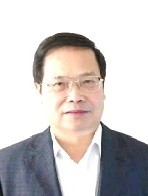
Prof. Yicheng Wu
Prof. Yicheng Wu, born in Guangxi Province in 1946, is an expert in functional crystal materials. He received his M.S. degree in 1981 and PhD degree in 1986 from University of Science and Technology of China. From 2000 to 2017, he worked in Technical Institute of Physics and Chemistry CAS, and was elected as Member of Chinese Academy of Engineering in 2005. In 2017, he joined Tianjin University of Technology, working as a full professor in Institute of Functional Crystals, and he joined Shandong University as a partly professor from 2019. Prof. WU has been engaged in the research of nonlinear optical materials for a long time, and has made great achievements in the field of new nonlinear optical materials exploration, crystal growth, nonlinear optical characterizations, and the relationship between crystal structure and nonlinear optical properties. He invented nonlinear optical crystals of LBO, CBO, LCB, etc. together with collaborators, in which LBO crystals have been widely used in the field of laser technology and internationally recognized as the most suitable second-/ third-frequency crystals for high average power all-solid-state lasers. In 1989, LBO was once rated as one of the top ten best laser high-tech products in the world, and won the first prize of National Invention in 1991. In 2017, Prof. WU was awarded the “Outstanding Achievement Award” from Asian Association of Crystal Growth and Crystal Technology.
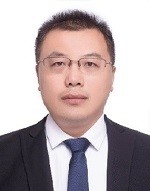 Prof. Haohai Yu
Prof. Haohai Yu
Prof. Haohai Yu specializes in the growth and further laser and nonlinear optical applications based on the multifunctional crystals. He is the international committee member of the Advanced Solid State Lasers (ASSL) of Optical Society of America, International Conference on Advanced Laser Technologies (ALT) and Photonics West 2021 of Society of Photo-Optical Instrumentation Engineers (SPIE). Prof. Yu is invited to serve as a working committee member of the Advanced Materials Consortium of China Association for Science and Technology (CAST), the deputy secretary general of the Youth Working Committee in China Silicate Society, the member of the Crystal Growth and Materials Branch of Silicate Society, and also a member of the youth editorial board of Chinese Journal of Lasers. In 2011, he was selected as a "Humboldt Scholar" and worked in Max-Born-Institute for Nonlinear Optics and Ultrafast Spectroscopy in Germany. He is currently a full professor and executive deputy director of State Key Laboratory of Crystal Materials in Shandong University.
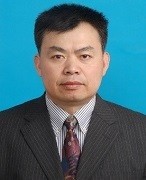 Prof. Zhanggui Hu
Prof. Zhanggui Hu
Prof. Zhanggui Hu, born in Anhui Province in 1964, currently is the director of Institute of Functional Crystals, Tianjin University of Technology. He received his M.S. degree in 1993 from University of Science and Technology of China and his doctorate degree in 2001 from Osaka University. He is now served as the chairman of Crystal Growth and Materials Sub-Committee of Chinese Ceramic Society and the standing director of Chinese Crystallographic Society. Prof. HU has been conducting research in nonlinear optical crystals and their properties. He was the inventor of new nonlinear optical crystals of K2Al2B2O7 and BaAlBO3F2. his research team grew the LBO single crystal with world’s largest size and weight, and the collaborators achieved the first highest power output of OPCPA laser in the world based on the LBO crystal in 2016. He has also held and completed a number of scientific research projects from NSFC, Ministry of Science and Technology, and CAS, etc., and he is the author or co-author of more than 90 peer-reviewed scientific publications and 10 patents.
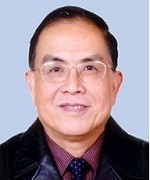 Prof. Jiyang Wang
Prof. Jiyang Wang
Prof. Jiyang Wang has made great achievements in deep ultraviolet nonlinear optical crystals, laser self-doubling crystals and new electro-optical crystals. He has successfully grown more than 20 different kinds of crystals and has published more than 200 research papers in Shandong University. Prof. Wang is serving as the Executive Councilor of the Chinese Association of Crystallography, Councilor of the International Organization of Crystal Growth (IOCG), Exclusive Member and Secretary-in-Chief of the Asian Society of Crystal Growth and Crystal Technology, Secretary-in-Chief of the Chinese Association of Crystal Growth (CACG), and Standing Member of the editorial boards of the Chinese Journal of Ceramic Society, Journal of Synthetic Crystals, and Chinese Journal of Rare Earth Metals.
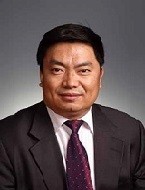 Prof. Xiangang Xu
Prof. Xiangang Xu
Prof. Xiangang Xu, born in Shandong Province in 1965, received the PhD Degree in condensed matter on semiconductor materials from Shandong University in 1992. He is mainly engaged in semiconductor materialsand device, focusing on the growth and device applications of SiC, Diamond and MOCVD compound semiconductor thin film materials. He has made great achievements in research and industrialization of SiC substrate which have been widely used in the field of power electronics and RF. He has been the Distinguished Professor of Ministry of Education of Changjiang Scholars, and a chief scientist of 973 Program. Prof. Xu has been awarded the Alexander von Humboldt fellow in 1995, the Electronics Letters Premium by IEE, UK in 1998, the Outstanding Paper Award of 21st IEEE GaAs IC Symposium, USA in 1999, the winner of National Science Funds for Outstanding Young Scholars in 2000, the first prize of Scientific and Technological progress in Shandong Province and Returned overseas students Entrepreneurship Award in Shandong Province in 2003, the Ten Outstanding Young Persons in Shandong Province in 2005, the government special allowance award in 2007, the First Prize of Technological Invention in Shandong Province in 2014. He is a member of the State Council’s degree committee and an expert on the overall group of semiconductor lighting projects of the National 863 Program. He has published more than 150 papers and conference presentations.
Please contribute your submission via https://mts-lsa.nature.com/cgi-bin/main.plex and indicate that this submission is for Special Issue on the 120th Anniversary of Shandong University in the cover letter. For any questions, please contact LSA Editorial Office at light_lsa@ciomp.ac.cn.
--------------------------------------------------------------------------------------------------
LSA Monthly Editor's Pick Reviewer, Monthly Outstanding Readers and Top Downloaded Paper in August 2021
Release Date: 8 September 2021
LSA Monthly Editor's Pick Reviewer in August 2021
LSA Monthly Outstanding Readers in August 2021
LSA Monthly Top Downloaded Paper in August 2021
--------------------------------------------------------------------------------------------------
Final Candidates: 2021 Rising Stars of Light
Release Date: 30 August 2021
We’d like to first thank all of the nominators and applicants for presenting us outstanding and impressive applications, which makes it very challenging to select the final candidates. After careful selection by the Committee, we’d like to congratulate the 10 final candidates as below (in alphabetical order):
Igor Aharonovich, Full Professor at University of Technology Sydney, Australia
Jonathan Albert Fan, Associate Professor at Stanford University, USA
Maxim Karpov, Scientist at Swiss Center for Electronics and Microtechnology (CSEM), Switzerland
Howard Lee, Associate Professor at University of California, Irvine, USA
Peter McMahon, Assistant Professor at Cornell University, USA
Abdoulaye Ndao, Assistant Professor at Boston University, USA
Carlos Rios, Assistant Professor at University of Maryland, College Park, USA
Lingyan Shi, Assistant Professor at University of California, San Diego, USA
Kai Wang, Postdoc at Stanford University, USA
Qifan Yang, Assistant Professor at Peking University, China
The final candidates will each enjoy one coupon of waiving publication fee in Light: Science & Applications (valid until 2023).
The final candidates will draw lots at iCANX talk on 1st Oct and determine the presentation sequence; details will be emailed by light_lsa@ciomp.ac.cn by late September.
Each final candidate will present a 20 min academic report at the ‘iCANX’ (8th and 15th Oct): the committee will rate candidates based on innovation (40%), impact (30%), and performance (30%). The below awards will be awarded on 15th Oct, 2021:
First Prize: 1 person (USD 3000 before tax)
Second Prize: 2 person (USD 1500 before tax)
Third Prize: 3 person (USD 1000 before tax)
Candidates Awards: 4 person
Committee:
Chair, Aydogan Ozcan, University of California, Los Angeles
Co-Chair, Chennupati Jagadish, Australian National University
Co-Chair, Hui Cao, Yale University
Co-Chair, Andrea Alù, City University of New York
Co-Chair, Lan Yang, Washington University in St. Louis
Co-Chair, Min Qiu, Westlake University
Co-Chair, Chaoyang Lu, University of Science and Technology of China
--------------------------------------------------------------------------------------------------
Special Issue: Rare earth luminescent materials
Release Date: 26 August 2021
Please contribute your submission via https://mts-lsa.nature.com. Please mark that it is a contribution to Special Issue on Rare earth luminescent materials in the cover letter and “Manuscript Comment” field during submission.
Submission deadline: 28 February 2022
Owing to the unique electronic configuration of rare earth ions, their luminescent materials exhibit very attractive optical properties in broad spectral region. Rare earth luminescent materials are thus recognized as the treasure house of the optical materials. Over the past 50 years, the rare earth luminescent material family has developed rapidly. So far, it has covered rare earth complex luminescent materials, lanthanide ions doped phosphors, persistent luminescent materials, rare earth optical crystals, lanthanide ions doped upconversion materials, rare earth organic-inorganic hybrid luminescent materials, rare earth relevant perovskite materials and other material systems. Luminescence has become the second largest application of rare earths. In addition to the traditional application in lighting, display, lasing and waveguiding, optical storage, rare earth luminescence has also expanded its applications in many emerging fields, such as information technology, energy conservation, sensor and testing, biomedicine, and so on.
This special issue showcases some of the latest advances in rare earth luminescent materials and their applications including, but not limited to, innovative approaches for design and synthesis, improved luminescence properties via novel strategies, and their advanced applications. This issue is co-edited by Prof. Hongjie Zhang from Tsinghua University and Changchun Institute of Applied Chemistry, Chinese Academy of Sciences and Prof. Hong Zhang from University of Amsterdam.
Guest editors:
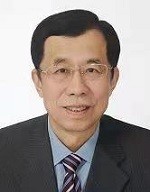 Dr. Hongjie Zhang, professor of Tsinghua University and Changchun Institute of Applied Chemistry, Chinese Academy of Sciences, academician of the Chinese Academy of Sciences. His research interests focus on the relationship between the structure and the function of rare earth functional materials in order to solve the key scientific problems affecting the development of the discipline. Till now, as the first or corresponding author, he has published more than 500 papers with total citations >4,0000, and has 86 authorized invention patents. He was awarded the 2nd Class of National Natural Science Award (2010), the Gold Kangaroo World Innovation Award (World Innovation Forum in Australia, 2013), the Outstanding Achievement Award in Science and Technology, CAS (2015), and elected the Fellow of 'The World Academy of Sciences (TWAS) for the advancement of science in developing countries' (2015).
Dr. Hongjie Zhang, professor of Tsinghua University and Changchun Institute of Applied Chemistry, Chinese Academy of Sciences, academician of the Chinese Academy of Sciences. His research interests focus on the relationship between the structure and the function of rare earth functional materials in order to solve the key scientific problems affecting the development of the discipline. Till now, as the first or corresponding author, he has published more than 500 papers with total citations >4,0000, and has 86 authorized invention patents. He was awarded the 2nd Class of National Natural Science Award (2010), the Gold Kangaroo World Innovation Award (World Innovation Forum in Australia, 2013), the Outstanding Achievement Award in Science and Technology, CAS (2015), and elected the Fellow of 'The World Academy of Sciences (TWAS) for the advancement of science in developing countries' (2015).
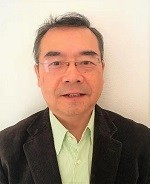 Dr. Hong Zhang, professor of University of Amsterdam, has been focusing on the linear and nonlinear luminescence dynamics of rare earth relevant materials and their novel functional design and development. His research activities cover a wide range of scientific fields and the results of his group continue to be published in international renowned journals in physics, chemistry, nanotechnology, biology, biomedicine, advanced materials and/or patented. He has been leading international bilateral and multilateral research consortia on nanophotonics and biomedical applications. He is also adjunct professor of Changchun Institute of Optics, Fine Mechanics and Physics, Chinese Academy of Sciences and chair professor of Northeast Normal University.
Dr. Hong Zhang, professor of University of Amsterdam, has been focusing on the linear and nonlinear luminescence dynamics of rare earth relevant materials and their novel functional design and development. His research activities cover a wide range of scientific fields and the results of his group continue to be published in international renowned journals in physics, chemistry, nanotechnology, biology, biomedicine, advanced materials and/or patented. He has been leading international bilateral and multilateral research consortia on nanophotonics and biomedical applications. He is also adjunct professor of Changchun Institute of Optics, Fine Mechanics and Physics, Chinese Academy of Sciences and chair professor of Northeast Normal University.
--------------------------------------------------------------------------------------------------
LSA Monthly Editor's Pick Reviewer, Monthly Outstanding Readers and Top Downloaded Paper in July 2021
Release Date: 13 August 2021
LSA Monthly Editor's Pick Reviewer in July 2021
LSA Monthly Outstanding Readers in July 2021
LSA Monthly Top Downloaded Paper in July 2021
--------------------------------------------------------------------------------------------------
LAM | Controllable microstructure and property in additive manufactured titanium alloy
Release Date: 13 August 2021
Over the last two decades, laser powder bed fusion (LPBF) has become one of the most widely used additive manufacturing technique. Among different alloys, LPBF fabricated titanium alloys have attracted much attention due to their good mechanical properties, outstanding corrosion resistance, and superior biocompatibility. The microstructure and properties of LPBF fabricated titanium alloys are significantly affected by the 3D printing process and post-process treatments. Researchers at the University of Manchester and Monash University now give an overview of the LPBF fabricated Ti-6Al-4V in terms of the processing-microstructure-property relationship. Through applying appropriate process parameters and post-process treatments, LPBF fabricated Ti-6Al-4V has comparable or even superior tensile, fatigue, fracture toughness, and creep properties than those of cast and/or wrought counterparts. However, there are still contradictions in simultaneously achieving high strength/ductility and strength/fracture toughness/creep resistance.
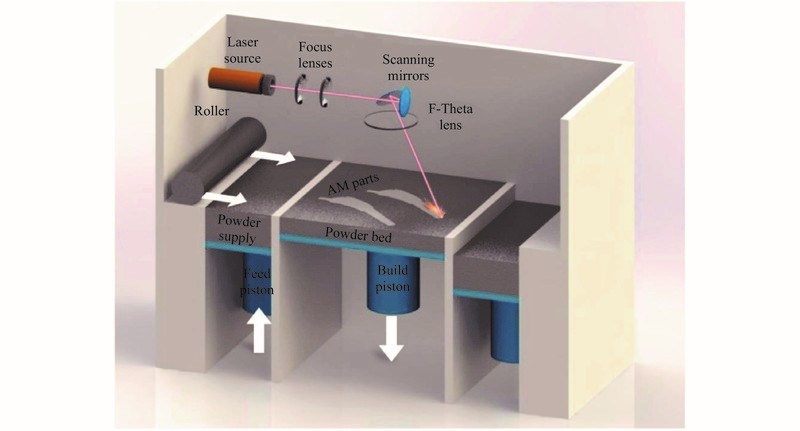
Figure | Schematic diagram of a typical LPBF system.
See the article:
Sheng Cao, Yichao Zou , Chao Voon Samuel Lim, Xinhua Wu
Review of laser powder bed fusion (LPBF) fabricated Ti-6Al-4V: process, post-process treatment, microstructure, and property, Light: Advanced Manufacturing, 20, 2 (2021)
https://doi.org/10.37188/lam.2021.020
Call for papers- Light: Advanced Manufacturing
Share insights and innovations in the profession with your colleagues by submitting your work to Light: Advanced Manufacturing (LAM).
As a sister journal of Light: Science & Applications, LAM is a new, highly selective, open-access, and free of charge international journal which aims to publish innovative research in all areas of light-based manufacturing, including basic, applied and industrial research and applications.
Editorial Office Contact Information:
Tel: +86-431-86176851
Fax: +86-431-84613409
E-mail: light_am@jihualab.ac.cn
Address: No. 3888 Dong Nanhu Road, Changchun 130033, Jilin, China
For more information, please visit the journal website at http://www.light-am.com/.
--------------------------------------------------------------------------------------------------
LSA Monthly Editor's Pick Reviewer, Monthly Outstanding Readers and Top Downloaded Paper in June 2021
Release Date: 27 July 2021
LSA Monthly Editor's Pick Reviewer in June 2021
LSA Monthly Outstanding Readers in June 2021
LSA Monthly Top Downloaded Paper in June 2021
--------------------------------------------------------------------------------------------------
Light: Science & Applications: Volume and Impact Soared
Release Date: 1 July 2021
According to the Journal Citation Reports (JCR2020) released on 30th June 2021, Light: Science & Applications (hereinafter referred to as LSA) has received its 8th impact factor of 17.782, ranking Top 3 among all SCI-indexed optics journals for 7 consecutive years.
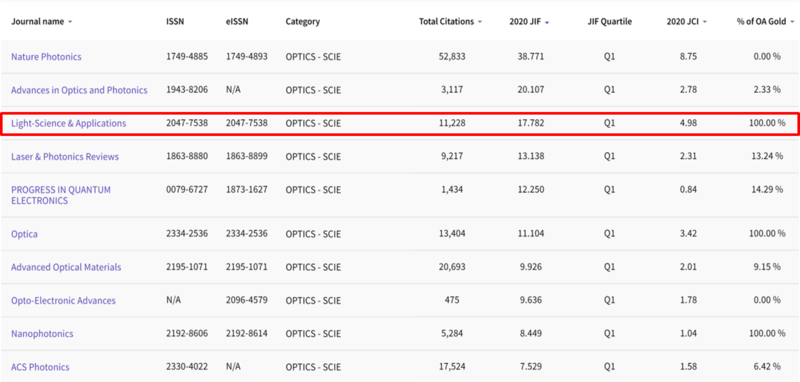
Compared with last year (JCR2019), LSA received a ~47% increase in total cites, ~5% increase in volume as well as a fly in impact factor, from 13.714 to 17.782.
Launched in 2012, LSA is expecting its 10-year anniversary soon in 2022. Looking back into the past years, LSA rapidly grew up from a small baby journal (22 published papers in 2012) into a highly selective and visible resource with soared volume (202 published papers in 2020).
A number of breakthrough works were reported in LSA and have fundamentally influenced optical researches. Asides from that, LSA reached out its antennas and built up offices in global top universities, extended its impact into its annual routine - Light Conferences - and attracted 5,000 attendees in the past few years. In particular, LSA cared about young and early career scientists and initiated the highly recognized worldwide campaign - Rising Stars of Light - for the most shining young scientists in optics. (2021 Rising Stars of Light is now open to applications, visit www.nature.com/lsa/news#2021RisingStar for details). Since COVID-19, LSA launched Light Online Talks, so as to benefit our optics peers who cannot go out and attend offline conferences as usual. Within a year, Light Online Talks have attracted a million views (visit here to replay the Episode ‘Light and Flow’).
With LSA’s persistent efforts in serving the optics community and its soared impact, UNESCO’s International Year of Light and International Day of Light named LSA as their golden partners (visit here to replay the Episode ‘Celebrate the 60th Anniversary of the First Laser’). In the next decade, LSA is expecting more participation from scientists and our joint contribution to the wellbeing of the optics community.
--------------------------------------------------------------------------------------------------
Light: Advanced Manufacturing 2021 Volume 2 Issue 2 is officially published
Release Date: 28 June 2021
Read the articles: 3 Articles, 4 Reviews, and 1 Letter!
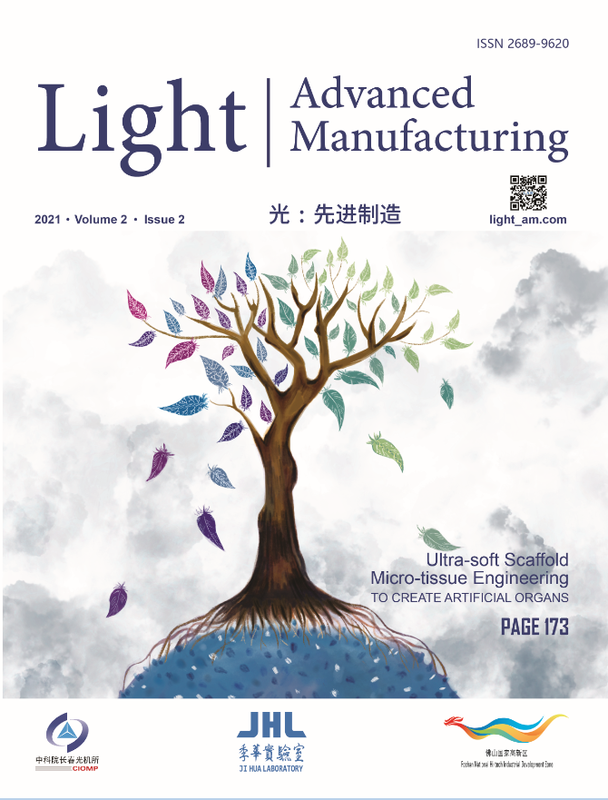
Cover Article:
Extracellular scaffold design for ultra-soft microtissue engineering
Research summary of the cover article:Shaohua Ma from China’s Tsinghua University Shenzhen International Graduate School (SIGS) and colleagues summarise the upfront advances in microtissue engineering. Microfluidics and microfluidics-based bioprinting have gained the most attention and are expected to overcome the conflict between the materials’ intrinsic and the engineering demands. The team proposes that ultra-soft microtissue engineering has an impactful future in precision and regenerative medicine.
Concept of cover art design :Ultrasoft, nature-derived scaffolding materials, such as collagen and glycosaminoglycan, are interacting with cells, as represented by the globe in the sketch.
Contents
A total of 8 articles have been published in this issue, including 3 Articles, 4 Reviews, and 1 Letter.
1. [Article] 3D printed micro-optics for quantum technology: Optimised coupling of single quantum dot emission into a single-mode fibre by Marc Sartison, Ksenia Weber, Simon Thiele, Lucas Bremer, Sarah Fischbach, Thomas Herzog, Sascha Kolatschek, Michael Jetter, Stephan Reitzenstein, Alois Herkommer, Peter Michler, Simone Luca Portalupi, Harald Giessen
2. [Article] Physics-based virtual coherence scanning interferometer for surface measurement by Rong Su, Richard Leach
3. [Article] Effect of cycling heat treatment on the microstructure, phase, and compression behaviour of directed energy deposited Ti-Mo alloys by Nan Kang, Kai Wu, Jin Kang, Jiacong Li, Xin Lin, Weidong Huang
4. [Review] Metasurfaces for manipulating terahertz waves by Xiaofei Zang, Bingshuang Yao, Lin Chen, Jingya Xie, Xuguang Guo, Alexei V. Balakin, Alexander P. Shkurinov, Songlin Zhuang
5. [Review] Extracellular scaffold design for ultra-soft microtissue engineering by Jiaqi Wang, Xiaowei Tang, Zitian Wang, Jiawei Li, Shaohua Ma
6. [Review] Recent Advances in the Fabrication of Highly Sensitive Surface-Enhanced Raman Scattering Substrates: Nanomolar to Attomolar Level Sensing by Shi Bai, Koji Sugioka
7. [Review] Review of geometric error measurement and compensation techniques of ultra-precision machine tools by Zongchao Geng, Zhen Tong, Xiangqian Jiang
8. [Letter] Photosensitive Material Enabling Direct Fabrication of Filigree 3D Silver Microstructures via Laser-Induced Photoreduction by Erik Hagen Waller, Julian Karst, Georg von Freymann
Extended Materials
Brief Introduction of LAM
Light: Advanced Manufacturing is published by the Light Publishing Group and sponsored by the Jihua Laboratory (Guangdong Province, Foshan City) in close cooperation with the CIOMP. It is a new, highly selective, open-access, and free of charge international sister journal of the Nature Journal Light: Science & Applications. The journal is aimed to publish innovative research in all modern areas of preferred light-based manufacturing, including fundamental and applied research as well as industrial innovations.
Why Submit to LAM
- Diamond Open Access
- Speedy Publication, Green Channel
- Highlight on LSA Homepage
- Award the Most Influential Papers at Light Conference
- Precision Promotion via Email
- All Media Promotion (EurekAlert! / Facebook / Twitter / TrendMD / Microblog / WeChat…)
Special Issue
Call for papers | Special Issue on Celebrating Holography after 60 Years of Successful Application
Guest Editors:
Prof. Dr. Wolfgang Osten, University Stuttgart
Prof. Dr. Richard Kowarschik, Friedrich-Schiller-University Jena
Deadline for Submission:
31 August 2021
LAM Featured Services

AI Profile
AI Profile aims to provide comprehensive search and mining services for researcher social networks.

LAM Contact Information:
Tel: +86-431-86176851
Fax: +86-431-84613409
E-mail:light_am@jihualab.com
Address: No. 3888 Dong Nanhu Road, Changchun 130033, Jilin, China
For more information, please visit the journal website at http://www.light-am.com/.
--------------------------------------------------------------------------------------------------
LSA Monthly Editor's Pick Reviewer, Monthly Outstanding Readers and Top Downloaded Paper in May 2021
Release Date: 24 June 2021
LSA Monthly Editor's Pick Reviewer in May 2021
LSA Monthly Outstanding Readers in May 2021
LSA Monthly Top Downloaded Paper in May 2021
--------------------------------------------------------------------------------------------------
LAM | Multi-material multi-photon 3D laser micro- and nanoprinting
Release Date: 22 June 2021
3D laser micro- and nanoprinting has made its way from early scientific discovery to industrial manufacturing processes. However, so far, most realized 3D architectures are composed of only a single polymeric material. Martin Wegener from Germany’s Karlsruhe Institute of Technology and colleagues review 3D printing of multi-materials on the nano- and microscale. The corresponding literature are divided into two avenues. In the first avenue, different photoresists are combined to manufacture a targeted multi-material 3D structure. In the second avenue, a single photoresist delivers 3D printed material with different properties by controlled stimuli during the 3D printing process. Instructive examples from biology, optics, mechanics, and electronics are discussed.
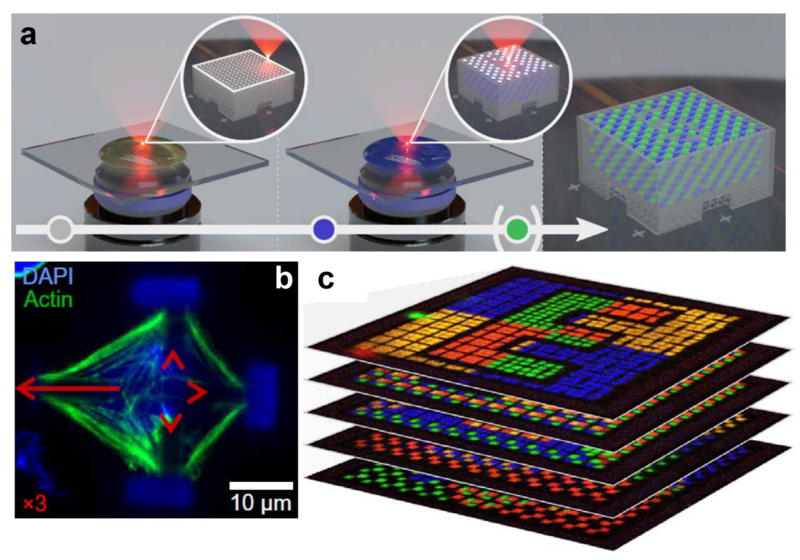
Figure | (Title) Multi-material multi-photon 3D laser micro- and nanoprinting.
(Caption) a, Approaches for manufacturing 3D multi-material microarchitectures using multi-photon 3D laser printing. After the exposure and development cycle of a first photoresist, a second photoresist is drop-casted manually, exposed, developed, etc. This approach can be realized by palette-based approach or microfluidic-chamber. Herein, all photoresists and developers are delivered to the printing region via a stage or microfluidic chamber. b, 3D stimulus-responsive multi-material based scaffold serving as a micro-stretch-bench for cells (green), specifically adhering to the red arrow area. The host-guest hydrogel in the middleswells reproducibly and thereby bends the elastic polymer lamellae. c, 3D deterministic fluorescent security feature containing four differently doped polymers emitting at four different wavelengths (red, blue, green, and yellow) and one non-fluorescent polymer component.
See the article:
Liang Yang, Frederik Mayer, Uwe H. F. Bunz, Eva Blasco and Martin Wegener
Multi-material multi-photon 3D laser micro- and nanoprinting, Light: Advanced Manufacturing, 7, 2 (2021)
http://www.light-am.com/article/doi/10.37188/lam.2021.017
Call for papers- Light: Advanced Manufacturing
Share insights and innovations in the profession with your colleagues by submitting your work to Light: Advanced Manufacturing (LAM).
As a sister journal of Light: Science & Applications, LAM is a new, highly selective, open-access, and free of charge international journal which aims to publish innovative research in all areas of light-based manufacturing, including basic, applied and industrial research and applications.
Editorial Office Contact Information:
Tel: +86-431-86176851
Fax: +86-431-84613409
E-mail: light_am@jihualab.ac.cn
Address: No. 3888 Dong Nanhu Road, Changchun 130033, Jilin, China
For more information, please visit the journal website at http://www.light-am.com/.
--------------------------------------------------------------------------------------------------
Light: Advanced Manufacturing | Digital holography in production: an overview
Release Date: 22 June 2021
Over the last decade, digital holography has become one of the fastest and at the same time most accurate methods for surface topography in production lines. The basic measurement principle uses interferometric recording of light waves reflected from component surfaces. By clever use of several lasers with different wavelengths, also macroscopic objects can be measured with sub-micrometer accuracy. Scientists at Fraunhofer Institute for Physical Measurement Techniques now give an overview of industrial applications that demonstrate the unique selling point of the technology for optical inline measurements of macroscopic measurement fields with sub-micron accuracy. Despite the high sensitivity to external influences such as vibrations, the implementation of holographic sensors in production environments has been very successful. Industrial applications in metal processing and chip manufacturing prove this impressively.
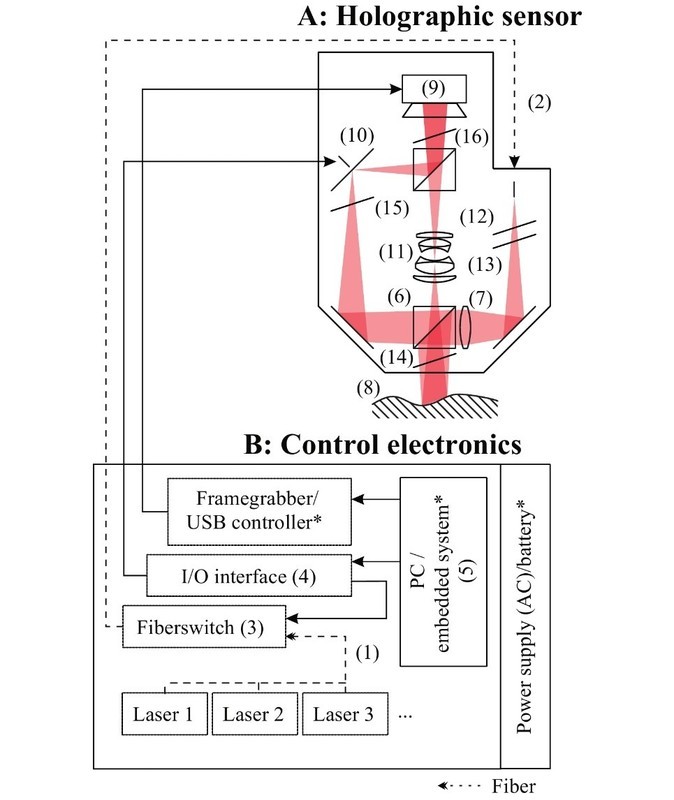
Figure | Sketch of the holographic setup
Markus Fratz, Tobias Seyler, Alexander Bertz, Daniel Carl
Digital holography in production: an overview, Light: Advanced Manufacturing, (2021) 2:15
http://www.light-am.com/article/doi/10.37188/lam.2021.015
Call for papers- Light: Advanced Manufacturing
Share insights and innovations in the profession with your colleagues by submitting your work to Light: Advanced Manufacturing (LAM).
As a sister journal of Light: Science & Applications, LAM is a new, highly selective, open-access, and free of charge international journal which aims to publish innovative research in all areas of light-based manufacturing, including basic, applied and industrial research and applications.
Editorial Office Contact Information:
Tel: +86-431-86176851
Fax: +86-431-84613409
E-mail: light_am@jihualab.ac.cn
Address: No. 3888 Dong Nanhu Road, Changchun 130033, Jilin, China
For more information, please visit the journal website at http://www.light-am.com/.
--------------------------------------------------------------------------------------------------
Light: Advanced Manufacturing two new articles published
Release Date: 1 June 2021
1. LAM | Recent Advances in the Fabrication of Highly Sensitive Surface-Enhanced Raman Scattering Substrates: Nanomolar to Attomolar Level Sensing
Surface-enhanced Raman scattering (SERS) permits multidisciplinary trace analyses and the potential detection of single molecules. Shi Bai and Koji Sugioka from RIKEN report a comprehensive review of recent progress in strategies for the fabrication of highly sensitive SERS substrates, as a means of achieving sensing on the attomolar scale. Femtosecond laser-based techniques are discussed as a versatile tool for the fabrication of SERS substrates to illustrate their specific merits for the next generation of SERS analysis. Several approaches are highlighted for enhancing the performance of SERS sensing devices, and real-time sensing and biological applications are reviewed to demonstrate the powerful analytical capabilities of these methods and the significant progress in SERS research.
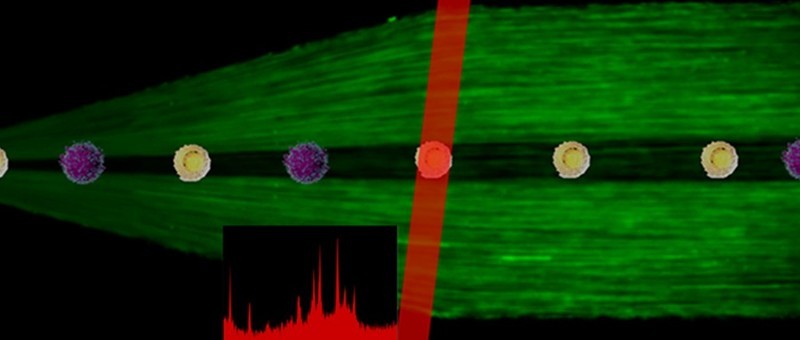
Figure | Schematic of cancer cells identification by SERS in a microfluidic chip in real-time
See the article:
Shi Bai, Koji Sugioka
Recent Advances in the Fabrication of Highly Sensitive Surface-Enhanced Raman Scattering Substrates: Nanomolar to Attomolar Level Sensing, Light: Advanced Manufacturing, (2021) 2:13
http://www.light-am.com/article/doi/10.37188/lam.2021.013
2. LAM | Effect of cycling heat treatment on the microstructure, phase, and compression behaviour of directed energy deposited Ti-Mo alloys
By controlling the thermal history during directed energy deposition and cycling heat treatment, a multi-functional non-toxic Ti-Mo alloy was developed for producing structural orthopedic components. A new thermodynamic insight into the microstructure and property optimization and homogenization of additive manufactured Ti-Mo alloy was given. Nan KANG and Xin LIN from China’s Northwestern Polytechnical University and colleagues now report that the thermal history plays the key role among hybrid processing, heterogeneous microstructure and multi-functions. The team demonstrated several applications for the new multi-functional Ti-Mo alloys including orthopedic components that can combine the high strength, high ductility, low modulus and high wear resistance.
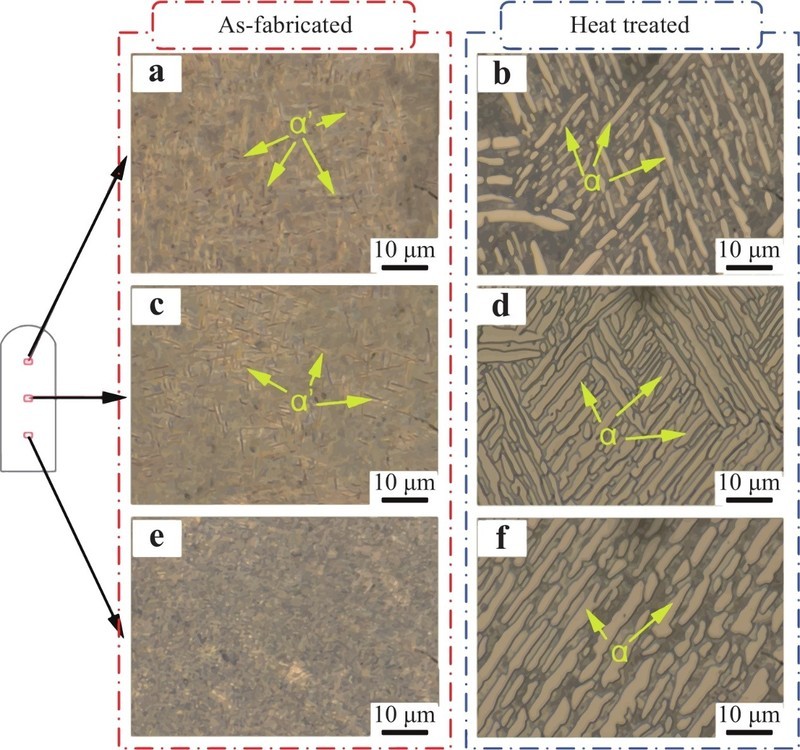
Figure | Microstructure of DED processed Ti-Mo sample at top, middle, and bottom positions: (a, c and e) as-fabricated and (b, d and f) heat-treated conditions. (α, hcp-Ti; α’, martensitic hcp-Ti)
See the article:
Nan Kang, Kai Wu, Jin Kang, Jiacong Li, Xin Lin, Weidong Huang
Effect of cycling heat treatment on the microstructure, phase, and compression behaviour of directed energy deposited Ti-Mo alloys, Light: Advanced Manufacturing, (2021) 2:16
http://www.light-am.com/article/doi/10.37188/lam.2021.016
Call for papers- Light: Advanced Manufacturing
Share insights and innovations in the profession with your colleagues by submitting your work to Light: Advanced Manufacturing (LAM).
As a sister journal of Light: Science & Applications, LAM is a new, highly selective, open-access, and free of charge international journal which aims to publish innovative research in all areas of light-based manufacturing, including basic, applied and industrial research and applications.
Editorial Office Contact Information:
Tel: +86-431-86176851
Fax: +86-431-84613409
E-mail:light_am@jihualab.com
Address: No. 3888 Dong Nanhu Road, Changchun 130033, Jilin, China
For more information, please visit the journal website at http://www.light-am.com/.
--------------------------------------------------------------------------------------------------
LSA Outstanding Reviewers/Papers and Top Downloaded Papers in 2020
Release Date: 24 May 2021
LSA Outstanding Reviewers in 2020
LSA Outstanding Papers in 2020
LSA Top Downloaded Papers in 2020
--------------------------------------------------------------------------------------------------
2021 Rising Stars of Light
Release Date: 18 May 2021
Rising Stars of Light event is a worldwide campaign for the most shining young scientists in optics-related fields. The event is initiated by nature academic journal Light: Science & Applications, and co-organized by iCANX.
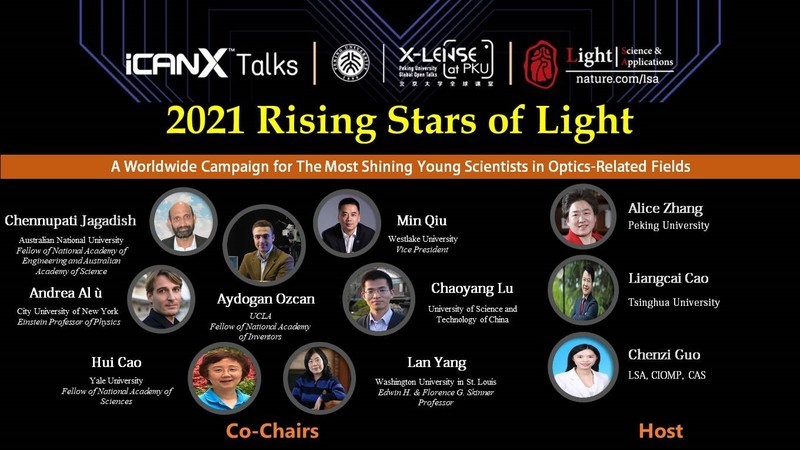
Committee
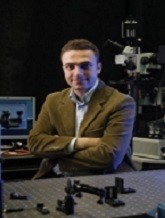 Chair, Aydogan Ozcan, UCLA, Fellow of National Academy of Inventors
Chair, Aydogan Ozcan, UCLA, Fellow of National Academy of Inventors
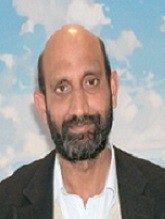 Co-Chair, Chennupati Jagadish, Australian National University, Fellow of National Academy of Engineering and Australian Academy of Science
Co-Chair, Chennupati Jagadish, Australian National University, Fellow of National Academy of Engineering and Australian Academy of Science
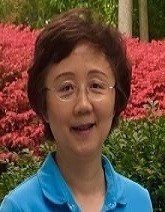 Co-Chair, Hui Cao, Yale University, Fellow of National Academy of Sciences
Co-Chair, Hui Cao, Yale University, Fellow of National Academy of Sciences
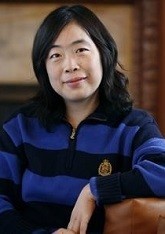 Co-Chair, Lan Yang, Washington University in St. Louis, Edwin H. & Florence G. Skinner Professor
Co-Chair, Lan Yang, Washington University in St. Louis, Edwin H. & Florence G. Skinner Professor
 Co-Chair, Min Qiu, Westlake University, Vice President
Co-Chair, Min Qiu, Westlake University, Vice President
 Co-Chair, Andrea Alù, City University of New York, Einstein Professor of Physics
Co-Chair, Andrea Alù, City University of New York, Einstein Professor of Physics
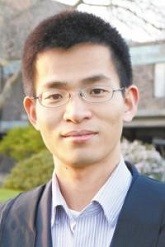 Co-Chair, Chaoyang Lu, University of Science and Technology of China
Co-Chair, Chaoyang Lu, University of Science and Technology of China
Host
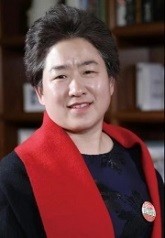 Alice Zhang, Peking University
Alice Zhang, Peking University
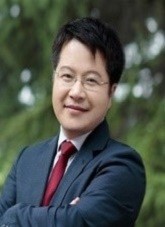 Liangcai Cao, Tsinghua University
Liangcai Cao, Tsinghua University
 Chenzi Guo, LSA, CIOMP, Chinese Academy of Sciences
Chenzi Guo, LSA, CIOMP, Chinese Academy of Sciences
Qualifications and How to Apply for 2021 Rising Stars of Light
- An applicant needs to be under 40 (born after 1st Jan, 1981) or obtain his/her Ph.D. degree no earlier than 1st Jan 2014.
- An applicant needs to be nominated by a senior professor (in English).
- An applicant needs to email the below documents to light_lsa@ciomp.ac.cn with the subject of ‘Name_Institution_2021 Rising Stars of Light’:
a) Optics-related scientific accomplishments in the past five years (no more than 600 words in English) and brief future research plan (no more than 300 words in English)
b) No more than 5 representative publications and/or patents.
c) Short bio (no more than 500 words in English)
d) A short video of the personal statement of his/her research career and major scientific achievements (no more than 3 minutes, presented in English).
- Application Deadline: 16th July 2021
2021 Rising Stars of Light Selection Process
- Candidates’ selection by the Committee: 10 final candidates will be selected from all applicants and announced at iCANX and on the homepage of Light: Science & Applications on 30th August 2021. The final candidates can each enjoy one coupon of waiving publication fee in Light: Science & Applications (valid until 2023).
- Presentation campaign at iCANX: Rising Stars of Light candidates will each give a 20 minutes academic report at the ‘iCANX’ (8th and 15th Oct): the committee will rate candidates based on innovation (40%), impact (30%), and performance (30%). The below awards will be awarded on 15th Oct, 2020:
First Prize: 1 person (USD 3000 before tax)
Second Prize: 2 person (USD 1500 before tax)
Third Prize: 3 person (USD 1000 before tax)
Candidates Awards: 4 person
About Light: Science & Applications
Light: Science & Applications is a Nature Academic journal, which publishes breakthrough researches from all aspects of optics and photonics, including basic, applied and engineering research and applications.
According to Journal Citation Reports, the latest impact factor of LSA is 13.714, ranking No.3 among all optics journals in the world for the past six years.
For more information, please visit www.nature.com/lsa
--------------------------------------------------------------------------------------------------
LSA Monthly Editor's Pick Reviewer, Monthly Outstanding Readers and Top Downloaded Paper in March 2021
Release Date: 25 April 2021
LSA Monthly Editor's Pick Reviewer in March 2021
LSA Monthly Outstanding Readers in March 2021
LSA Monthly Top Downloaded Paper in March 2021
--------------------------------------------------------------------------------------------------
Special Issue on the 70th Anniversary of Department of Electronic Engineering, Tsinghua University
23 April 2021
Submission deadline: 24th October 2021
Illustrations: This special issue is to celebrate the 70th Anniversary (24th April 2022) of Department of Electronic Engineering, Tsinghua University (DEETHU). It is aimed to highlight the most exciting research works recently carried out in DEETHU or by DEETHU alumni, in the field of optics, photonics and optoelectronics.
(Note: The corresponding authors should state that their manuscript is submitted to this special issue and identify themselves as faculties or alumni (year of graduation) of DEETHU in the cover letter.)
Brief introduction of DEETHU:
The Department of Electronic Engineering (formerly the Department of Radio Electronics) of Tsinghua University was established in 1952. Currently it is composed of six Research Institutes, namely, Information Optoelectronic Technology, Information System, Communication, Circuits & Systems, Microwave & Antenna, and Information Cognition & Intelligent System. Our faculty includes two academicians, 49 full professors and 61 associate professors. Meanwhile, we have 1048 undergraduate students and 805 Master and Ph. D candidates.
The Department of Electronic Engineering is one of the earliest institutions in China engaged in teaching and research in electronics and information sciences. Through continuous and concerted research in basic theory, applied technology and system engineering, integrated with plenty of projects from NSFC, National High-Tech Programs and National Key Projects, solid and influential research bases were formed on laser and optics, wireless, networking, and integrated circuits, etc. Academic exchanging programs, joint laboratories and contracted projects were established and performed with renowned universities, research institutes and industries both domestic and abroad. Many outstanding scholars and scientists have been appointed as our honorary or guest professors.
Guest editors:
 Prof. Siyuan Yu
Prof. Siyuan Yu
Siyuan Yu, Fellow of OSA, received his Bachelor’s degree from Tsinghua University in 1984, Master degree from Wuhan Institute of Post and Telecommunications in 1987, and PhD degree from the University of Glasgow, UK, in 1997. Siyuan Yu is currently Professor of Photonic Information Systems at the University of Bristol, UK, and a Special Guest Professor at the State Key Laboratory of Optoelectronic Materials and Technologies, Sun Yat-sen University, China. Prof Yu has carried out research in the physics and technologies of photonic integration as well as its application in optical networks for over 35 years, focusing on innovative photonic components technologies aimed at addressing key issues at systems and networking levels. He contributed to areas such as integrated high-speed optical switches, micro-cavity lasers, all-optical logic circuits and integrated quantum photonics. In recent year his research has focused on developing novel integrated photonic components, optical fibres and systems technology based on the orbital angular momentum of photons. He has published more than 230 papers, co-edited a book, and has been granted several international patents.
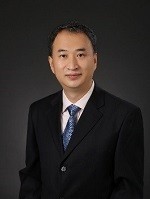 Prof. Zhibiao Hao
Prof. Zhibiao Hao
Zhibiao Hao received his B.S. and Ph.D. Degrees from the Department of Electronic Engineering, Tsinghua University in 1996 and 2001, respectively. He worked in University of California at Los Angeles as a visiting scholar from 2006 to 2007. He is currently a professor and the president of academic committee of the Department of Electronic Engineering, Tsinghua University. His research interests include the epitaxial growth of low-dimensional III-V semiconductor materials and novel optoelectronic devices based on low-dimensional semiconductors. He has published more than 180 peer-reviewed SCI papers.
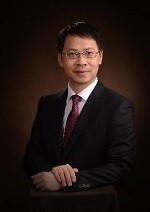 Prof. Shilong Pan
Prof. Shilong Pan
Shilong Pan received the B.S. and Ph.D. degrees in electronic engineering from Tsinghua University, Beijing, China, in 2004 and 2008, respectively. He is currently a professor of Nanjing University of Aeronautics and Astronautics. His research has focused on microwave photonics. He has authored or co-authored over 260 papers in peer-reviewed journals. Prof. Pan is currently an associate editor of Electronics Letters, a Topical Editor of Chinese Optics Letters, and the vice chair of IEEE MTT-22 Microwave Photonics. He has also served as a Chair of a number of international conferences, symposia, and workshops, including the TPC Chair of IEEE ICOCN 2015, TPC Co-chair of IEEE MWP2017, General Co-chair of IEEE MWP2021, TPC Co-chair of ICMMT 2021. Prof. Pan is a Fellow of OSA, SPIE and IET. He was selected as an IEEE Photonics Society Distinguished Lecturer in 2019 and was a recipient of IEEE MTT-S Outstanding Young Engineer Award in 2021.
Please contribute your submission via https://mts-lsa.nature.com/cgi-bin/main.plex or contact LSA Editorial Office at light_lsa@ciomp.ac.cn.
--------------------------------------------------------------------------------------------------
Light: Advanced Manufacturing | Extracellular scaffold design for ultra-soft microtissue engineering
LAM new article published
Release Date: 10 April 2021
Scaffolding materials play critical roles in supporting cell growth and behaviour in artificial conditions. The extracellular scaffolds provide mechanobiological cues to regulate cell activities and maintain “communication” with enclosed cells over short and long distances. Based on these principles, replicating properties of natural extracellular scaffolds is among the utmost importance in creating artificial lives. However, extracellular scaffolds in many organs are extremely soft and viscoelastic, rendering their structural manufacturing with microscale precision rather challenging. Shaohua Ma from China’s Tsinghua University Shenzhen International Graduate School (SIGS) and colleagues now summarise the upfront advances in microtissue engineering. Microfluidics and microfluidics-based bioprinting have gained the most attention and are expected to overcome the conflict between the materials’ intrinsic and the engineering demands. The team proposes that ultra-soft microtissue engineering has an impactful future in precision and regenerative medicine.
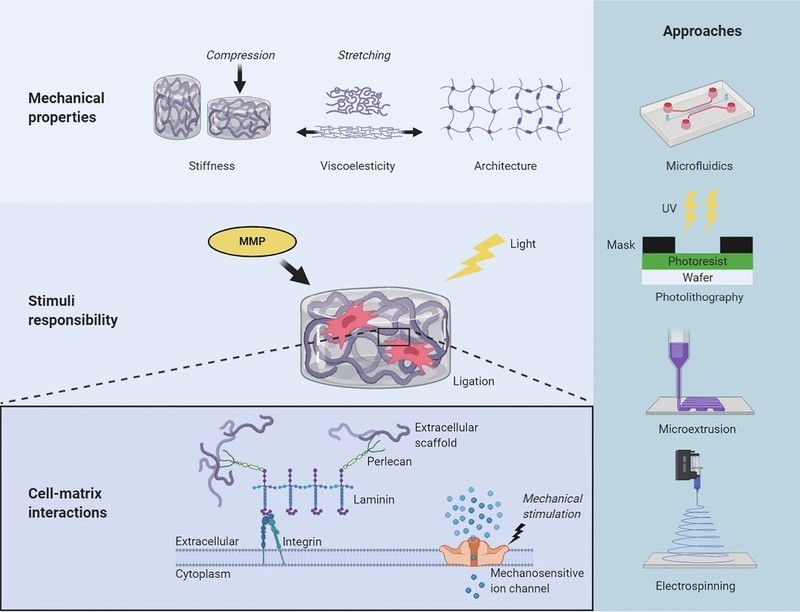
Figure | Summary of cues provided by extracellular scaffold and their engineering techniques.
See the article:
Jiaqi Wang, Xiaowei Tang, Zitian Wang, Jiawei Li and Shaohua Ma
Extracellular scaffold design for ultra-soft microtissue engineering, Light: Advanced Manufacturing, (2021)2:11
http://www.light-am.com/article/doi/10.37188/lam.2021.011
Call for papers- Light: Advanced Manufacturing
Share insights and innovations in the profession with your colleagues by submitting your work to Light: Advanced Manufacturing (LAM).
As a sister journal of Light: Science & Applications, LAM is a new, highly selective, open-access, and free of charge international journal which aims to publish innovative research in all areas of light-based manufacturing, including basic, applied and industrial research and applications.
Editorial Office Contact Information:
Tel: +86-431-86176851
Fax: +86-431-84613409
E-mail: light_am@jihualab.com
Address: No. 3888 Dong Nanhu Road, Changchun 130033, Jilin, China
For more information, please visit the journal website at http://www.light-am.com/.
--------------------------------------------------------------------------------------------------
LAM two new articles published
Release Date: 6 April 2021
1.Light: Advanced Manufacturing | Physics-based virtual coherence scanning interferometer for surface measurement
The evaluation of uncertainty for optical measurement of surfaces with complex topography (such as freeform and biomimetic surfaces) is an open issue in industrial metrology. A promising approach to uncertainty evaluation is to use a “virtual instrument” the digital twin of a specific real instrument. Rong Su and Richard Leach from China’s Shanghai Institute of Optics and Fine Mechanics and UK’s University of Nottingham respectively report the first virtual coherence scanning interferometer for surface measurement. The virtual instrument is fully powered by physical models derived from first principles and provides deterministic measurement results for surfaces with complex topography, akin to the results obtained with a real instrument. The software to implement the virtual instrument is made publicly available under the CC BY License.
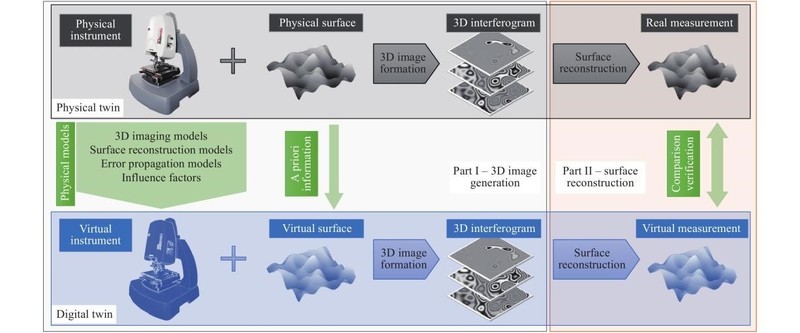
Figure | Concept of the virtual CSI. Surface parameters can be evaluated based on the virtual-measurement result (Interferometer image courtesy of Zygo Corporation).
See the article:
Rong Su,Richard Leach
Physics-based virtual coherence scanning interferometer for surface measurement, Light: Advanced Manufacturing, (2021) 2:9
http://www.light-am.com/article/doi/10.37188/lam.2021.009
2.Light: Advanced Manufacturing | 3D printed micro-optics for quantum technology: Optimised coupling of single quantum dot emission into a single-mode fibre
Making quantum networks a reality relies crucially on building efficient optical fibre-based quantum light sources. Here, Harald Giessen and Peter Michler from the University of Stuttgart in Germany and colleagues present an advanced manufacturing approach to accomplish this task. Complex micrometre-sized optics were 3D printed on top of individual indium arsenide quantum dots to enhance their single-photon extraction efficiency. Different lens geometries were systematically investigated to optimise the required optical design and a significant increase in light extraction was achieved. Furthermore, a 3D printed fibre chuck was used to precisely position an optical fibre, equipped with another 3D printed in-coupling lens, onto such a quantum dot. This compact on-chip solution enables high coupling efficiency into a single-mode fibre with high-rate single-photon emission.
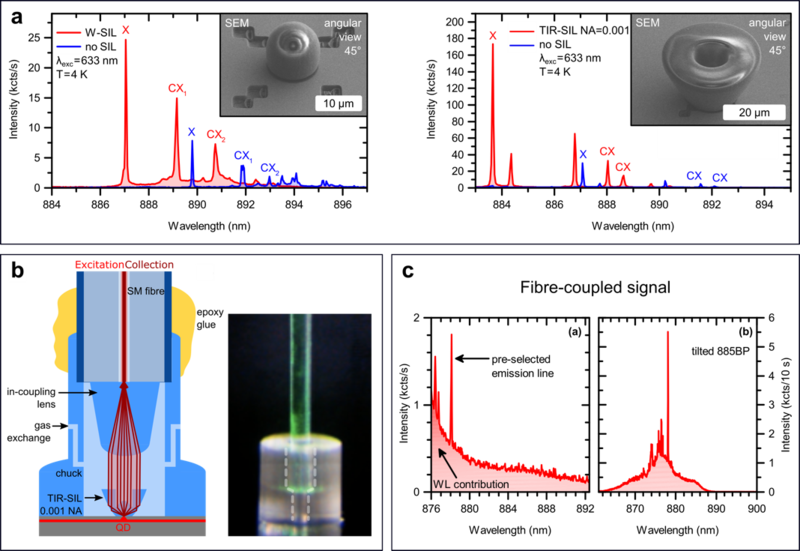 Figure | Single-photon emission enhancement and single-mode fiber coupling.
Figure | Single-photon emission enhancement and single-mode fiber coupling.
See the article:
Marc Sartison, Ksenia Weber, Simon Thiele, Lucas Bremer, Sarah Fischbach, Thomas Herzog, Sascha Kolatschek, Michael Jetter, Stephan Reitzenstein, Alois Herkommer, Peter Michler, Simone Luca Portalupi, Harald Giessen
3D printed micro-optics for quantum technology: Optimised coupling of single quantum dot emission into a single-mode fibre, Light: Advanced Manufacturing, (2021) 2:6
http://www.light-am.com/article/doi/10.37188/lam.2021.006
Call for papers- Light: Advanced Manufacturing
Share insights and innovations in the profession with your colleagues by submitting your work to Light: Advanced Manufacturing (LAM).
As a sister journal of Light: Science & Applications, LAM is a new, highly selective, open-access, and free of charge international journal which aims to publish innovative research in all areas of light-based manufacturing, including basic, applied and industrial research and applications.
Editorial Office Contact Information:
Tel: +86-431-86176851
Fax: +86-431-84613409
E-mail:light_am@jihualab.com
Address: No. 3888 Dong Nanhu Road, Changchun 130033, Jilin, China
For more information, please visit the journal website at http://www.light-am.com/.
--------------------------------------------------------------------------------------------------
LSA Monthly Editor's Pick reviewer, Monthly Outstanding Readers and Top Downloaded Paper in February 2021
Release Date: 25 March 2021
LSA Monthly Editor's Pick Reviewer in February 2021
LSA Monthly Outstanding Readers in February 2021
LSA Monthly Top Downloaded Paper in February 2021
--------------------------------------------------------------------------------------------------
Light: Advanced Manufacturing | Metasurfaces for manipulating terahertz waves
LAM new review published
Release Date: 22 March 2021
Traditional THz functional devices are bulky and must be sufficiently thick to generate propagation phase accumulation to realize the desired wave-manipulating functionality. Metasurfaces, which are two-dimensional metamaterials consisting of predesigned meta-atoms, can accurately tailor the amplitudes, phases, and polarisations of electromagnetic waves at subwavelength resolutions, meaning they can provide a flexible platform for designing ultra-compact and high-performance THz components. Xiaofei Zang et al. from China’s University of Shanghai for Science and Technology now report recent advancements in metasurfaces for the wavefront manipulation of THz waves based on these ultrathin and ultra-compact devices. The team aim to highlight some novel approaches for designing ultra-compact THz devices and broaden the applications of metasurfaces in THz science and technology.
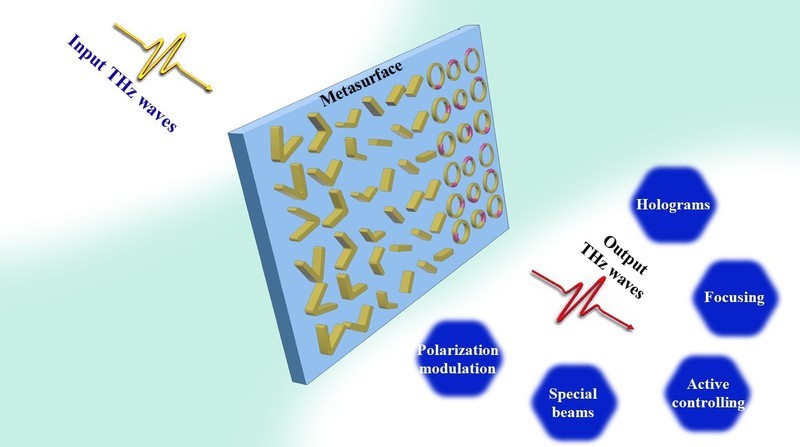
Figure | Schematics of metasurfaces for manipulating THz waves. The associated THz responses include focusing, holograms, polarisation modulation, special beams and active controlling.
See the article:
Xiaofei Zang, Bingshuang Yao, Lin Chen, Jingya Xie, Xuguang Guo, Alexei V. Balakin, Alexander P. Shkurinov, and Songlin Zhuang
Metasurfaces for manipulating terahertz waves, Light: Advanced Manufacturing, (2021) 2:10
http://www.light-am.com/article/doi/10.37188/lam.2021.010
Call for papers- Light: Advanced Manufacturing
Share insights and innovations in the profession with your colleagues by submitting your work to Light: Advanced Manufacturing (LAM).
As a sister journal of Light: Science & Applications, LAM is a new, highly selective, open-access, and free of charge international journal which aims to publish innovative research in all areas of light-based manufacturing, including basic, applied and industrial research and applications.
Editorial Office Contact Information:
Tel: +86-431-86176851
Fax: +86-431-84613409
E-mail: light_am@jihualab.com
Address: No. 3888 Dong Nanhu Road, Changchun 130033, Jilin, China
For more information, please visit the journal website at http://www.light-am.com/.
--------------------------------------------------------------------------------------------------
Light: Advanced Manufacturing | Photosensitive Material Enabling Direct Fabrication of Filigree 3D Silver Microstructures via Laser-Induced Photoreduction
LAM new article published
Release Date: 12 March 2021
A novel photosensitive Material enables direct on-chip fabrication of three-dimensional highly conductive functional microstructures. Potential applications include antennas for 6G mobile communication, sophisticated microelectric-mechanic devices as well as near-infrared sensors. Via focused laser radiation tiny microstructures are three-dimensionally printed on arbitrary substrates. Commonly, these structures are made of polymer. Erik Waller from the Fraunhofer ITWM in Germany and colleagues from the Technische Universität Kaiserslautern and Stuttgart university now introduced a photosensitive material that enables direct printing of conductive silver microstructures via a photoreduction mechanism. The properties of these structures such as conductivity and resolution are very promising for applications in the current gap between high-frequency electronics and optics. As a first application Waller et al. demonstratea polarizer for near-infrared, circularly polarized light.

Figure | Silver microstructures with almost arbitrary geometries are possible.
See the article:
Erik Hagen Waller, Julian Karst and Georg von Freymann
Photosensitive Material Enabling Direct Fabrication of Filigree 3D Silver Microstructures via Laser-Induced Photoreduction, Light: Advanced Manufacturing, (2021)2:8
http://www.light-am.com/article/doi/10.37188/lam.2021.008
Call for papers- Light: Advanced Manufacturing
Share insights and innovations in the profession with your colleagues by submitting your work to Light: Advanced Manufacturing (LAM).
As a sister journal of Light: Science & Applications, LAM is a new, highly selective, open-access, and free of charge international journal which aims to publish innovative research in all areas of light-based manufacturing, including basic, applied and industrial research and applications.
Editorial Office Contact Information:
Tel: +86-431-86176851
Fax: +86-431-84613409
E-mail: light_am@jihualab.com
Address: No. 3888 Dong Nanhu Road, Changchun 130033, Jilin, China
For more information, please visit the journal website at http://www.light-am.com/.
--------------------------------------------------------------------------------------------------
Rose in Science, Lighting the world
Release Date: 5 March 2021
“Rose in Science”, an annual event celebrating the achievement of women science workers, was launched by the Changchun Institute of Optics, Fine Mechanics and Physics (CIOMP), Chinese Academy of Sciences (CAS) in 2015, which was marked “International Year of Light” by the United Nations (UN). Over the years, a number of successful women scientists and researchers have taken part in this event, telling their stories and sharing their experiences on the path of scientific exploration and technological management, encouraging young female science students to take up the career of scientific research. These young students and researchers, working along their male peers to promote the development of science, are like roses, blooming with their unique charm.
To celebrate International Women's Day this year, the 2021 "Rose in Science, Lighting the World" will be held on March 8. This year’s event is planned and organized by CIOMP, The Optical Society (OSA), IEEE Photonics Society, iCANX Talks and Light: Science & Applications. It will be streamed live on iCANX Talks at 20:00 (Beijing time) on March 8.
The biggest Rose in Science event so far, a number of top women in the field of optics and physics have been invited to share their wisdom of life as well as their insights on the path of research and discovery. They are scientists and leaders from the United States, Canada, Germany, Korea and China:
Winner of the Nobel Prize in Physics 2018, University of Waterloo——Donna Strickland
President of IEEE Photonics Society, Colorado State University——Carmen Menoni
First female President of the German Physical Society, Heidelberg University——Johanna Stachel
IEEE Fellow Committee Chair, North Carolina State University——Leda Lunardi
iCANX Talks Founder, Peking University——Zhang Haixia
CEO of The Optical Society (OSA)——Liz Rogan
Sungkyunkwan University——Miso Kim
Join us on iCANX Talks at 20:00 PM (Beijing Time) on March 8;
Let's hear how these inspiring role models made their achievements;
Let's collect their advice;
Let’s reaffirm our passion for science;
2021 shall see us more confident, graceful and at ease in study and work;
2021 shall see us staying firm on the path of research, persistent and hard working.
Biographies
 Donna Strickland is a professor in the Department of Physics and Astronomy at the University of Waterloo and is one of the recipients of the Nobel Prize in Physics 2018 for developing chirped pulse amplification with Gérard Mourou. Strickland was a research associate at the National Research Council Canada, a physicist at Lawrence Livermore National Laboratory and a member of technical staff at Princeton University. In 1997, she joined the University of Waterloo, where her ultrafast laser group develops high-intensity laser systems for nonlinear optics investigations. She is a recipient of a Sloan Research Fellowship, a Premier’s Research Excellence Award and a Cottrell Scholar Award. She served as the president of the Optical Society (OSA) in 2013 and is a fellow of OSA, the Royal Society of Canada, and SPIE.
Donna Strickland is a professor in the Department of Physics and Astronomy at the University of Waterloo and is one of the recipients of the Nobel Prize in Physics 2018 for developing chirped pulse amplification with Gérard Mourou. Strickland was a research associate at the National Research Council Canada, a physicist at Lawrence Livermore National Laboratory and a member of technical staff at Princeton University. In 1997, she joined the University of Waterloo, where her ultrafast laser group develops high-intensity laser systems for nonlinear optics investigations. She is a recipient of a Sloan Research Fellowship, a Premier’s Research Excellence Award and a Cottrell Scholar Award. She served as the president of the Optical Society (OSA) in 2013 and is a fellow of OSA, the Royal Society of Canada, and SPIE.
 Carmen S. Menoni is University Distinguished Professor in the Department of Electrical and Computer Engineering at Colorado State University. Prof. Menoni’s expertise is in optical and material science. Her research focuses on the development of novel interference coating architectures for power scaling of mid-infrared lasers. She is also investigating fundamental mechanisms in amorphous oxides for low mechanical loss interference coatings for gravitational wave interferometers. Prof. Menoni is Fellow of the Institute of Electrical and Electronic Engineers (IEEE), the Optical Society of America (OSA), the American Physical Society (APS), the American Association for the Advancement of Science (AAAS), and SPIE.
Carmen S. Menoni is University Distinguished Professor in the Department of Electrical and Computer Engineering at Colorado State University. Prof. Menoni’s expertise is in optical and material science. Her research focuses on the development of novel interference coating architectures for power scaling of mid-infrared lasers. She is also investigating fundamental mechanisms in amorphous oxides for low mechanical loss interference coatings for gravitational wave interferometers. Prof. Menoni is Fellow of the Institute of Electrical and Electronic Engineers (IEEE), the Optical Society of America (OSA), the American Physical Society (APS), the American Association for the Advancement of Science (AAAS), and SPIE.
 Johanna Stachel studied chemistry and physics at the University of Mainz and the ETH Zuerich. Since 1996 she has a chair a professor of experimental physics at Heidelberg University. She was the first female president of the 65,000 member German Physical Society 2012-2014. Scientifically, Stachel is exploring the Quark-Gluon Plasma, a phase of strongly interacting matter that existed in the early universe and can be created in the laboratory in collisions of highly energetic nuclei. She had an important role in the construction of the ALICE experiment at the LHC and serves in important managing functions. She also made seminal contributions to the phenomenology of this field.
Johanna Stachel studied chemistry and physics at the University of Mainz and the ETH Zuerich. Since 1996 she has a chair a professor of experimental physics at Heidelberg University. She was the first female president of the 65,000 member German Physical Society 2012-2014. Scientifically, Stachel is exploring the Quark-Gluon Plasma, a phase of strongly interacting matter that existed in the early universe and can be created in the laboratory in collisions of highly energetic nuclei. She had an important role in the construction of the ALICE experiment at the LHC and serves in important managing functions. She also made seminal contributions to the phenomenology of this field.
 Leda Lunardi has been a professor since 2003 at the Electrical and Computer Engineering Department at North Carolina State University in Raleigh, NC. Her research areas are in fabrication and modeling of electronic and optoelectronic devices, and microelectromechanical devices. Before joining academia, she spent several years doing R&D at AT&T (then Bell Labs), and JDS Uniphase. In addition to her research, Dr. Lunardi has managed several NSF grants for STEM research and education to encourage women and underrepresented minority students to graduate in engineering and science and pursue graduate degrees. She has authored and co-authored more than 100 publications and conference proceedings, been granted 5 patents, and given invited talks, plenary addresses, and short courses at conferences. She is an IEEEE Fellow and co-shared the IEEEE Photonics Society Engineering Achievement Award.
Leda Lunardi has been a professor since 2003 at the Electrical and Computer Engineering Department at North Carolina State University in Raleigh, NC. Her research areas are in fabrication and modeling of electronic and optoelectronic devices, and microelectromechanical devices. Before joining academia, she spent several years doing R&D at AT&T (then Bell Labs), and JDS Uniphase. In addition to her research, Dr. Lunardi has managed several NSF grants for STEM research and education to encourage women and underrepresented minority students to graduate in engineering and science and pursue graduate degrees. She has authored and co-authored more than 100 publications and conference proceedings, been granted 5 patents, and given invited talks, plenary addresses, and short courses at conferences. She is an IEEEE Fellow and co-shared the IEEEE Photonics Society Engineering Achievement Award.
 Haixia(Alice) Zhang, Professor, Institute of Microelectronics, Peking University. Dr. Zhang is active in the field of micro and nanotechnologies with a focus on micro energy devices and smart system. She is Editorial board member of IEEE-JMEMS, IEEE-TANO, Microsystems & Nanoengineering, IET MNL, etc. She is co-author of 250 peer-reviewed scientific publications and 9 books/book chapters, co-invented 42 patents (include 5 US patents). She served on the program committees of numbers conference, such as IEEE NEMS, IEEE Nano, and MNE conferences. She is the founder of iCANX Talks.
Haixia(Alice) Zhang, Professor, Institute of Microelectronics, Peking University. Dr. Zhang is active in the field of micro and nanotechnologies with a focus on micro energy devices and smart system. She is Editorial board member of IEEE-JMEMS, IEEE-TANO, Microsystems & Nanoengineering, IET MNL, etc. She is co-author of 250 peer-reviewed scientific publications and 9 books/book chapters, co-invented 42 patents (include 5 US patents). She served on the program committees of numbers conference, such as IEEE NEMS, IEEE Nano, and MNE conferences. She is the founder of iCANX Talks.
 Liz Rogan has been at OSA for almost 30 years in positions initially focused on operations. Beginning in 2002, she was honored with the role of Chief Executive Officer (CEO) of OSA and The OSA Foundation. In 2018, Liz was recognized as a Foreign Fellow of the Chinese Optical Society as part of their first class of foreign fellows. This is the highest honor to those who have made outstanding contributions to the development of optics and photonics science and technology in China. In 2019, Liz was recognized as an OSA Fellow for outstanding long-term management at OSA and leadership across the optics and photonics community.
Liz Rogan has been at OSA for almost 30 years in positions initially focused on operations. Beginning in 2002, she was honored with the role of Chief Executive Officer (CEO) of OSA and The OSA Foundation. In 2018, Liz was recognized as a Foreign Fellow of the Chinese Optical Society as part of their first class of foreign fellows. This is the highest honor to those who have made outstanding contributions to the development of optics and photonics science and technology in China. In 2019, Liz was recognized as an OSA Fellow for outstanding long-term management at OSA and leadership across the optics and photonics community.
 Miso Kim is an assistant professor of the School of Advanced Materials Science and Engineering (AMSE) at Sungkyunkwan University (SKKU). She received her M.S. (2007) and Ph.D. degrees (2012) in Materials Science and Engineering from the Massachusetts Institute of Technology (MIT). She worked in Korea Research Institute of Standards and Science (KRISS) as a senior research scientist from 2012 till Feb. 2021. She recently joined the School of AMSE at SKKU in February 2021 as a faculty member. Her primary research interests cover analytical modeling, design, and experimental characterization of piezoelectric materials and mechanical metamaterials for energy harvesting and sensing.
Miso Kim is an assistant professor of the School of Advanced Materials Science and Engineering (AMSE) at Sungkyunkwan University (SKKU). She received her M.S. (2007) and Ph.D. degrees (2012) in Materials Science and Engineering from the Massachusetts Institute of Technology (MIT). She worked in Korea Research Institute of Standards and Science (KRISS) as a senior research scientist from 2012 till Feb. 2021. She recently joined the School of AMSE at SKKU in February 2021 as a faculty member. Her primary research interests cover analytical modeling, design, and experimental characterization of piezoelectric materials and mechanical metamaterials for energy harvesting and sensing.
--------------------------------------------------------------------------------------------------
LSA Monthly Editor's Pick reviewer, Monthly Outstanding Readers and Top Downloaded Paper in January 2021
Release Date: 26 Feb 2021
LSA Monthly Editor's Pick Reviewer in January 2021
LSA Monthly Outstanding Readers in January 2021
LSA Monthly Top Downloaded Paper in January 2021
--------------------------------------------------------------------------------------------------
Light: Advanced Manufacturing | Artificial compound eyes: inspiration for advanced camera systems
LAM new review published
Release Date: 26 Feb 2021
Compound eyes of arthropods are advanced and fascinating visual systems with distinct features of small sizes, large view-fields, infinite depths of field, and dynamic imaging capability. Thus far, considerable efforts have been devoted to the fabrication of artificial compound eye cameras due to their promising applications in robotic vision, unmanned aerial vehicle detection, and medical diagnosis. Hong-Bo Sun from Tsinghua University and his colleagues reviewed state-of-the-art technologies for manufacturing artificial compound eye cameras and also discussed challenges and perspectives for their future applications.
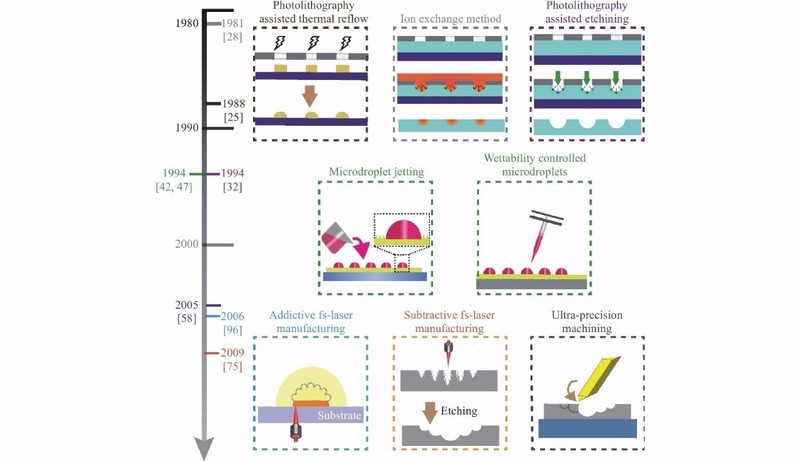
Figure | Technologies for fabricating MLA and representative fabrication methods.
See the article:
Lin Zhu, Yong-Lai Zhang and Hong-Bo Sun
Miniaturising artificial compound eyes based on advanced micronanofabrication techniques, Light: Advanced Manufacturing, (2021) 2:7
https://doi.org/10.37188/lam.2021.007
Call for papers- Light: Advanced Manufacturing
Share insights and innovations in the profession with your colleagues by submitting your work to Light: Advanced Manufacturing (LAM).
As a sister journal of Light: Science & Applications, LAM is a new, highly selective, open-access, and free of charge international journal which aims to publish innovative research in all areas of light-based manufacturing, including basic, applied and industrial research and applications.
Editorial Office Contact Information:
Tel: +86-431-86176851
Fax: +86-431-84613409
E-mail: light_am@jihualab.com
Address: No. 3888 Dong Nanhu Road, Changchun 130033, Jilin, China
For more information, please visit the journal website at http://www.light-am.com/.
--------------------------------------------------------------------------------------------------
Light: Advanced Manufacturing | Recent Progress in Heterogeneous III-V-on-Silicon Photonic Integration
LAM new article published
Release Date: 24 Feb 2021
Integrated photonics was rejuvenated as silicon starting challenging the dominant status of conventional III-V compound semiconductors at onset of the new millennium. Heterogeneous III-V-on-silicon integration provides an ideal platform to marry their respective material and production advantages. Two veteran researchers in this field, Di Liang from Hewlett Packard Labs and John Bowers from University of California - Santa Barbara, carefully reviewed a number of recent breakthroughs to show how this novel concept has evolved from a science project 15 years ago to a growing business and compelling research field today. It includes both commercial successes in optical transceivers and new research directions in materials, device designs and integration platform innovations. Future progress perspectives were discussed at the end to encourage more technological advances in academia and industry.

Figure | Schematic overview of heterogeneous Si photonics and its developing branches. Inset: cross-sectional cartoon of three basic waveguides enabled by heterogeneous integration.
See the article:
Di Liang and John E. Bowers
Recent Progress in Heterogeneous III-V-on-Silicon Photonic Integration, Light: Advanced Manufacturing, (2021) 2:5
http://www.light-am.com/article/doi/10.37188/lam.2021.005
Call for papers- Light: Advanced Manufacturing
Share insights and innovations in the profession with your colleagues by submitting your work to Light: Advanced Manufacturing (LAM).
As a sister journal of Light: Science & Applications, LAM is a new, highly selective, open-access, and free of charge international journal which aims to publish innovative research in all areas of light-based manufacturing, including basic, applied and industrial research and applications.
Editorial Office Contact Information:
Tel: +86-431-86176851
Fax: +86-431-84613409
E-mail: light_am@jihualab.com
Address: No. 3888 Dong Nanhu Road, Changchun 130033, Jilin, China
For more information, please visit the journal website at http://www.light-am.com/.
--------------------------------------------------------------------------------------------------
Light: Advanced Manufacturing | 3D-printed spectrometer on a 100 x 100 µm² footprint
LAM new article published
Release Date: 5 Feb 2021
The miniaturisation of spectroscopic measurement devices opens novel information channels for size critical applications such as endoscopy or consumer electronics. In a new paper published in Light: Advanced Manufacturing, a team of scientists, led by Professor Alois Herkommer from the Institute of Applied Optics and Professor Harald Giessen from the 4th Physics Institute, University of Stuttgart, Germany, now report on an angle-insensitive 3D-printed miniature spectrometer based on a classical grating spectrometer design. The spectrometer was fabricated via two-photon direct laser writing combined with a super-fine inkjet process. It has a volume of less than 100 × 100 × 300 µm³. The team demonstrated a spectral resolution of up to 10 nm in the visible range from 490 nm to 690 nm. Printing this spectrometer directly onto camera sensors is feasible and arrays of such systems can be used as macro-pixels of a snapshot hyperspectral camera.
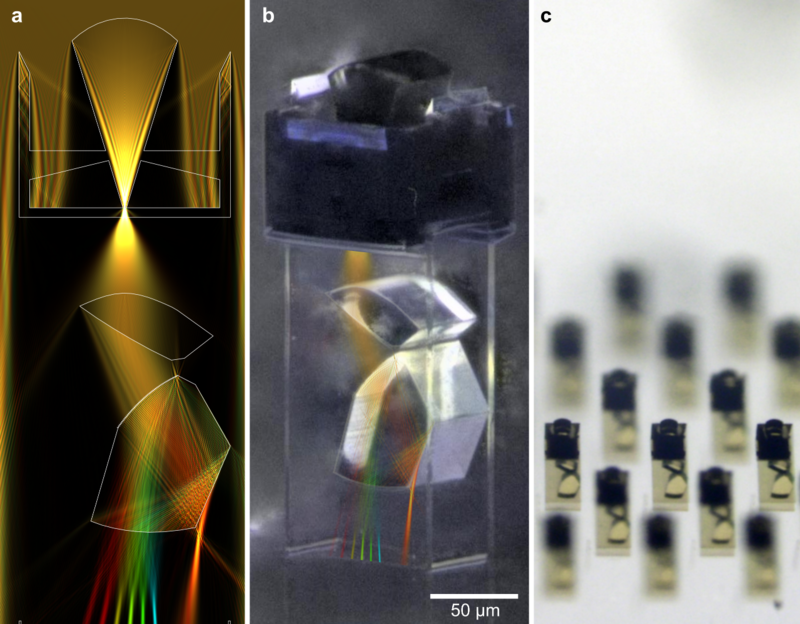 3D-printed miniature spectrometer. a wave-optical simulation of the spectrometer. b microscope image of the fabricated spectrometer overlayed with the intensity distribution from a. c array of fabricated spectrometers.
3D-printed miniature spectrometer. a wave-optical simulation of the spectrometer. b microscope image of the fabricated spectrometer overlayed with the intensity distribution from a. c array of fabricated spectrometers.
See the article:
Andrea Toulouse, Johannes Drozella, Simon Thiele, Harald Giessen, and Alois Herkommer
3D-printed miniature spectrometer for the visible range with a 100 x 100 µm² footprint, Light: Advanced Manufacturing (2021)2:2. https://doi.org/10.37188/lam.2021.002
Call for papers- Light: Advanced Manufacturing
Share insights and innovations in the profession with your colleagues by submitting your work to Light: Advanced Manufacturing (LAM).
As a sister journal of Light: Science & Applications, LAM is a new, highly selective, open-access, and free of charge international journal which aims to publish innovative research in all areas of light-based manufacturing, including basic, applied and industrial research and applications.
Editorial Office Contact Information:
Tel: +86-431-86176851
Fax: +86-431-84613409
E-mail: light_am@jihualab.com
Address: No. 3888 Dong Nanhu Road, Changchun 130033, Jilin, China
For more information, please visit the journal website at http://www.light-am.com/.
--------------------------------------------------------------------------------------------------
LSA Monthly Editor's Pick reviewer, Monthly Outstanding Readers and Top Downloaded Paper in December 2020
Release Date: 28 Jan 2021
LSA Monthly Editor's Pick Reviewer in December 2020
LSA Monthly Outstanding Readers in December 2020
LSA Monthly Top Downloaded Paper in December 2020
Back to Top
--------------------------------------------------------------------------------------------------
Light: Advanced Manufacturing—first batch of articles officially online!
Release Date: 13 Jan 2021
Light: Advanced Manufacturing (www.light-am.com), the new, highly selective, open-access, and free of charge sister journal of the Nature Journal Light: Science & Applications, has now officially published three articles online.
LAM, launched in April, 2020, aims to publish top innovative research in all modern areas of preferred light-based manufacturing, including fundamental and applied research as well as industrial innovations. A rigorous yet objective peer-review process is applied.
The three manuscripts published so far are the results of seven months of joint endeavor of the Editorial Board, Editorial Office and the authors. They are:
- Original Article: Non-destructive thickness characterisation of 3D multilayer semiconductor devices using optical spectral measurements and machine learning https://doi.org/10.37188/lam.2021.001
Hyunsoo Kwak, Sungyoon Ryu, Suil Cho, Junmo Kim, Yusin Yang and Jungwon Kim* from KAIST and Samsung Electronics Co. Ltd
- Original Article: Three-Dimensional Direct Laser Writing of PEGda Hydrogel Microstructures with Low Threshold Power using a Green Laser Beam https://doi.org/10.37188/lam.2021.003
Haoyi Yu ,Haibo Ding, Qiming Zhang ,Zhongze Gu and Min Gu* from RMIT University, Southeast University and University of Shanghai for Science and Technology
- Review: Recent progress of skin-integrated electronics for intelligent sensing https://doi.org/10.37188/lam.2021.004
Dengfeng Li , Kuanming Yao , Zhan Gao , Yiming Liu , Xinge Yu* from City University of Hong Kong We at LAM look forward to receiving and publishing outstanding manuscripts and eliciting a variety of breakthroughs in both light-based manufacturing and technological outcomes. For more details, please visit the journal’s website at www.light-am.com.
